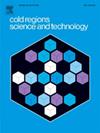Sea-ice mapping and digitization in Antarctic waters using a shipborne monocular camera
IF 3.8
2区 工程技术
Q1 ENGINEERING, CIVIL
引用次数: 0
Abstract
An automated process is proposed for sea-ice field mapping and digitization using a monocular, machine vision camera. The proposed process for 2D mapping involves a number of steps, from image rectification and estimation of a virtual birds-eye-view to image segmentation by means of three distinct methods, both of individual images and large 2D maps. Lastly, the resulting ice floes are expressed as either convex or concave 2D polygons. Additionally, a separate process for 3D mapping is introduced, termed vSLAM. The implemented methods enable an automated and continuous acquisition of a detailed map of the ice field, as a series of 2D polygons and even 3D point-clouds, at engineering scale. Compared to other methods using satellite or aerial data, the proposed method is a more cost-effective and easy to integrate solution into vessels travelling in ice covered waters. The information can be highly compressed, thus enabling a higher level of situational awareness not only for the data collecting vessels, but also for others travelling in the same areas.
利用船载单目相机在南极水域进行海冰测绘和数字化
提出了一种利用单目机器视觉相机进行海冰野外测绘和数字化的自动化过程。所提出的二维映射过程涉及许多步骤,从图像校正和虚拟鸟瞰图的估计到通过三种不同的方法对单个图像和大型二维地图进行图像分割。最后,得到的浮冰被表示为凸或凹的二维多边形。此外,还引入了一个单独的3D映射过程,称为vSLAM。所实施的方法能够自动和连续地获取冰原的详细地图,作为一系列2D多边形甚至3D点云,在工程尺度上。与使用卫星或航空数据的其他方法相比,该方法更具成本效益,并且易于集成到在冰雪覆盖水域行驶的船舶中。这些信息可以高度压缩,因此不仅可以为数据收集船提供更高水平的态势感知,也可以为在同一区域航行的其他船只提供更高水平的态势感知。
本文章由计算机程序翻译,如有差异,请以英文原文为准。
求助全文
约1分钟内获得全文
求助全文
来源期刊

Cold Regions Science and Technology
工程技术-地球科学综合
CiteScore
7.40
自引率
12.20%
发文量
209
审稿时长
4.9 months
期刊介绍:
Cold Regions Science and Technology is an international journal dealing with the science and technical problems of cold environments in both the polar regions and more temperate locations. It includes fundamental aspects of cryospheric sciences which have applications for cold regions problems as well as engineering topics which relate to the cryosphere.
Emphasis is given to applied science with broad coverage of the physical and mechanical aspects of ice (including glaciers and sea ice), snow and snow avalanches, ice-water systems, ice-bonded soils and permafrost.
Relevant aspects of Earth science, materials science, offshore and river ice engineering are also of primary interest. These include icing of ships and structures as well as trafficability in cold environments. Technological advances for cold regions in research, development, and engineering practice are relevant to the journal. Theoretical papers must include a detailed discussion of the potential application of the theory to address cold regions problems. The journal serves a wide range of specialists, providing a medium for interdisciplinary communication and a convenient source of reference.
 求助内容:
求助内容: 应助结果提醒方式:
应助结果提醒方式:


